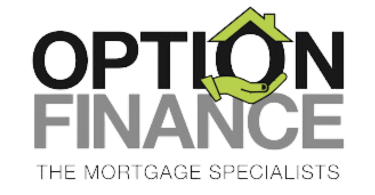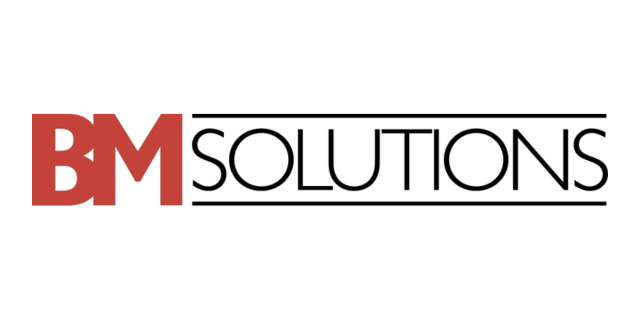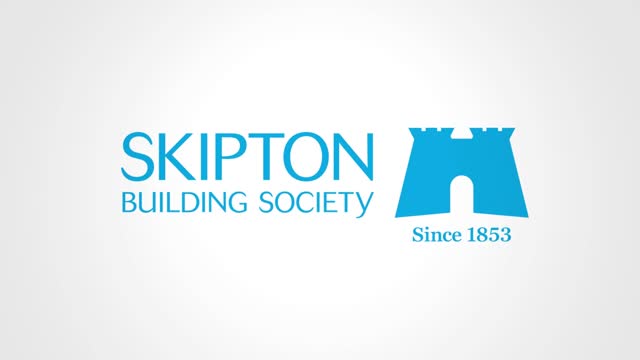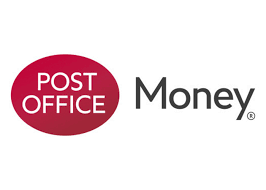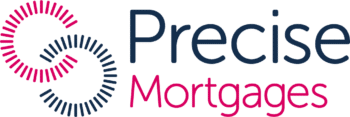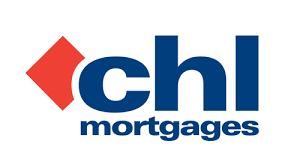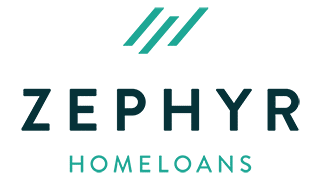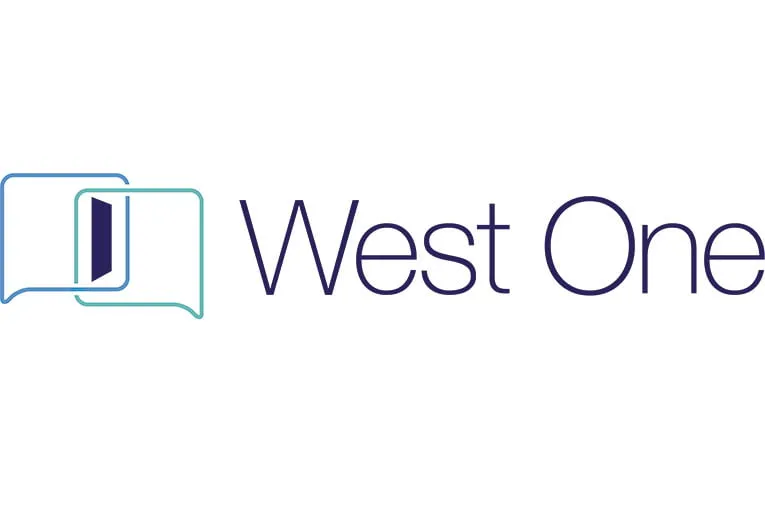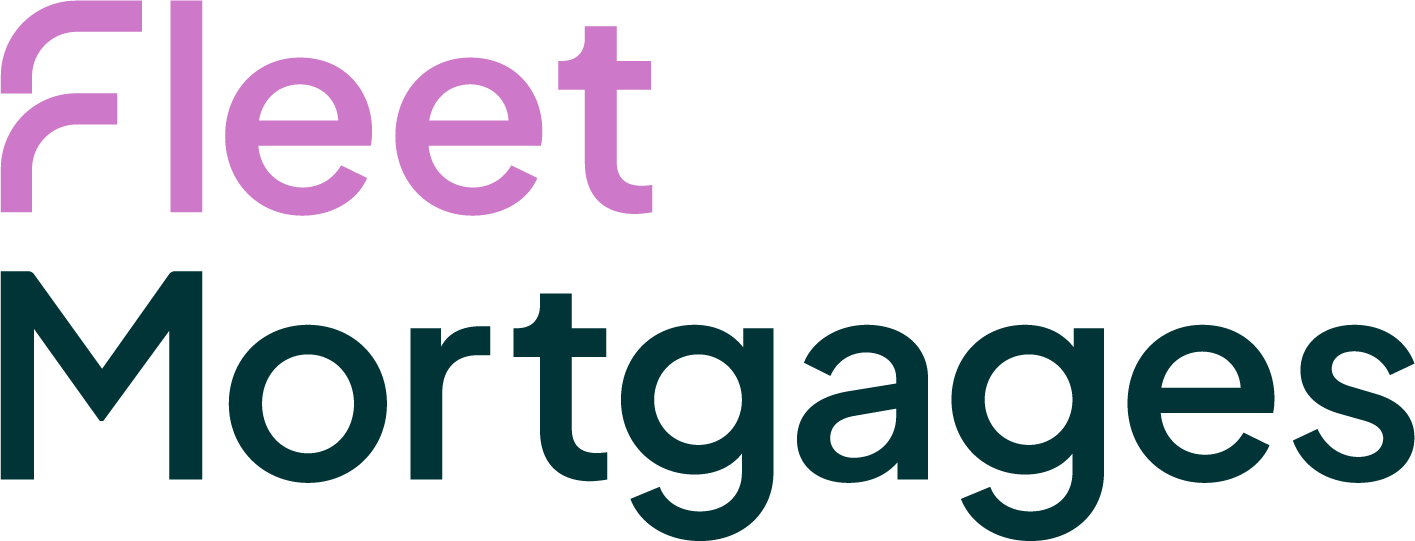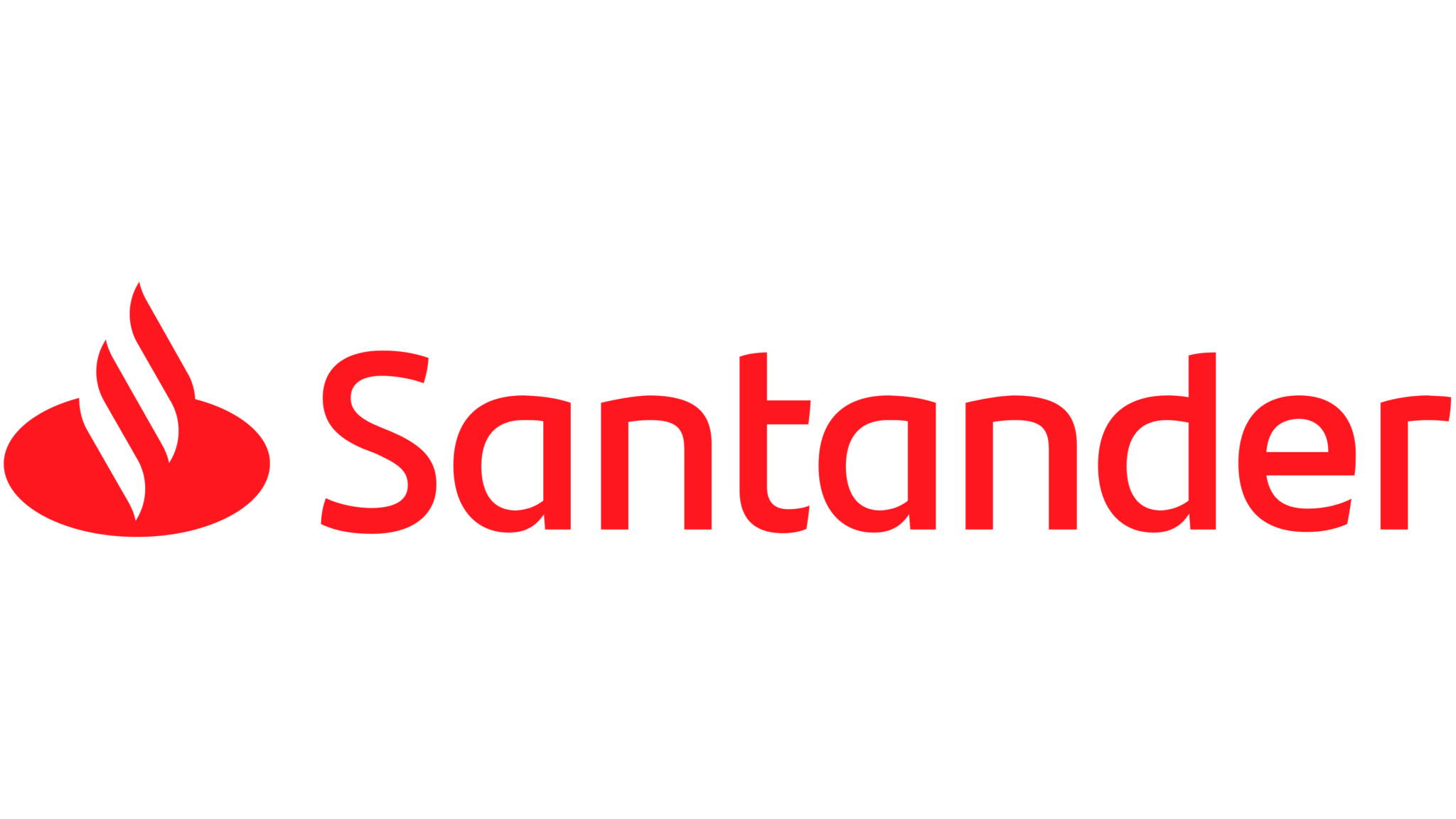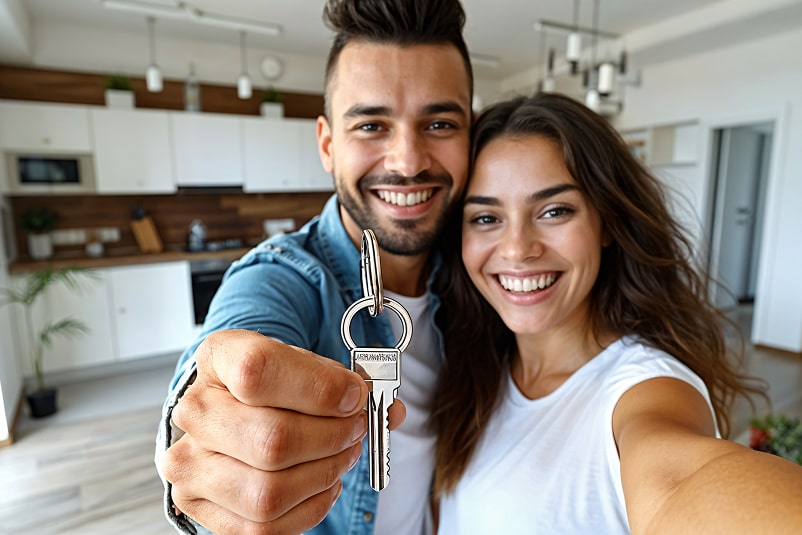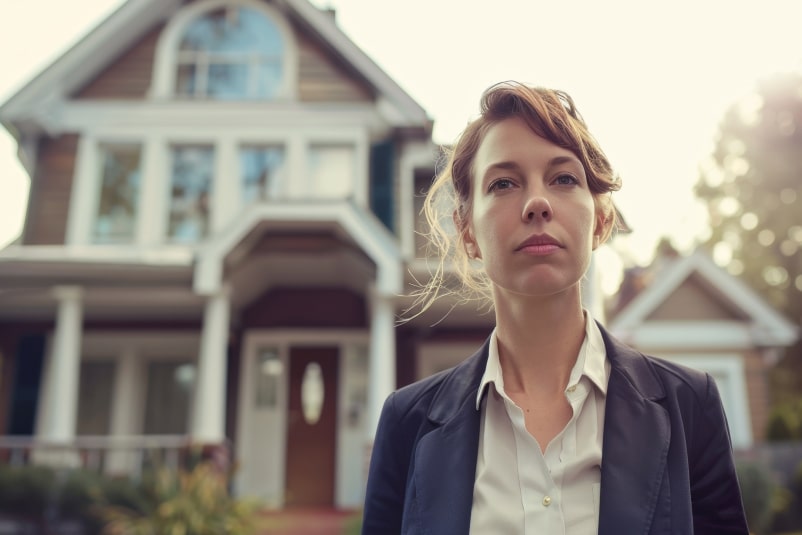Introduction to Shared Ownership Mortgages
For many aspiring homeowners, saving for a full deposit or securing a large mortgage can be a major obstacle. Shared ownership mortgages offer a practical solution as part of the government-backed shared ownership scheme, allowing buyers to step onto the property ladder by purchasing a share of a property and renting the remainder. This guide explains how shared ownership works, who qualifies, what the lending landscape looks like in 2025, and the pros and cons you need to consider before proceeding.
What Is a Shared Ownership Mortgage?
A shared ownership mortgage is a part-buy, part-rent scheme designed to help those with limited deposits or moderate incomes buy a home. Instead of purchasing the entire property outright, you buy a share usually between 25% and 75% and pay rent on the remaining portion, which is still owned by a housing association or developer, while you own your purchased share.
Over time, you have the option to increase your ownership stake through a process called staircasing, which can eventually lead to fully owning your home.
This guide explains how shared ownership works, you purchase a share of the property and pay rent on the part that the housing association or developer owns. Shared ownership work involves buying an initial share, usually with a smaller deposit, and gradually increasing your share over time.
For example, if a property is valued at £240,000 and you buy a 40% share (£96,000), you would take out a mortgage for that amount and pay subsidised rent on the remaining 60%. In most cases, only a 5–10% deposit is required on the share you’re purchasing, not on the total property value making the scheme significantly more accessible than traditional home buying.
Unlike a standard mortgage, where you typically need a larger deposit and own the entire property from the start, shared ownership allows you to enter the property market with a smaller upfront investment and a split ownership structure.
How Shared Ownership Mortgages Work
Shared ownership mortgages are assessed in much the same way as standard mortgages. Lenders look at your income, outgoings, credit history, and financial commitments to determine whether you can afford both the mortgage payments and the rent on the unsold share.
The affordability checks are rigorous and take into account long-term sustainability especially as costs like rent, service charge, and potential maintenance expenses can increase over time.
You’ll typically need to go through an eligibility assessment with the housing association, followed by the mortgage lender’s own underwriting process. If approved, your mortgage will cover your portion of the home, while your monthly payments will include:
Mortgage repayments on your share
Rent on the remaining share (usually set at 2.75% of the retained value per annum)
Service charge and maintenance costs, especially for flats or leasehold properties
These monthly payments are amounts paid each month and may also include ground rent or other regular expenses, depending on the property and provider.
Shared ownership homes are mostly leasehold, so it’s essential to understand the implications, including any ground rent or restrictions on alterations or subletting. Shared ownership homes can be provided by a housing association, local authority, or private provider.
How it Works with a Housing Association
When you buy a shared ownership property, you’re entering into a partnership with a housing association, which is a not-for-profit organisation set up to help people get onto the property ladder.
With shared ownership, you purchase a share of a property, typically between 25% and 75% of the purchase price while the housing association retains ownership of the remaining share of the property. This means you become a part-owner and a tenant at the same time.
As the owner of your share, you’ll need to pay rent to the housing association on the share of the property you don’t own. The rent payments are usually set at a subsidised rate, often between 2% and 3% per year of the value of the remaining share.
For example, if you buy a 50% share of a property with a purchase price of £200,000, you will pay rent on the remaining 50% (£100,000). If the rent is set at 2.75% per annum, your annual rent would be £2,750, or about £229 per month.
The housing association acts as your landlord for the share they own, and you’ll need to pay your rent on time each month. Rent payments are typically reviewed annually and may increase in line with inflation or other factors set out in your lease. This arrangement allows you to get onto the property ladder with a smaller deposit and mortgage, while still having the option to increase your share of the property in the future.
Who Is Eligible for Shared Ownership?
Shared ownership is available to UK residents aged 18 or over.
To qualify for shared ownership in 2025, buyers generally need to meet a few core criteria:
You must be a first-time buyer, or a former homeowner unable to afford to buy again.
Your total household income must not exceed £80,000 a year (or £90,000 a year in London).
You must not currently own another property.
You should demonstrate that you are unable to buy a suitable home on the open market without assistance.
You must pass both a credit and affordability assessment from the mortgage lender and housing association.
There is no upper age limit, and many housing associations are now working with lenders to support a wider variety of borrowers, including key workers, older applicants, and those with non-standard incomes such as self-employed individuals or contractors.
For the most up-to-date eligibility criteria and application guidance, visit the official government website.
High Street Lenders Offering Shared Ownership Mortgages
Several high street mortgage lenders have dedicated shared ownership products in 2025. These lenders are typically more stringent in their criteria and expect clean credit files, stable income, and lower debt levels.
Lender | Typical Lending Features |
|---|---|
Halifax / Lloyds Bank | Offers up to 95% loan-to-value (LTV) on share; supports staircasing; competitive fixed rates |
Barclays | Offers low-deposit mortgages on shares; flexible affordability for professional borrowers |
Santander | Supports both new-build and resale shared ownership homes; strict credit scoring applies |
Nationwide Building Society | Offers up to 90–95% LTV on share; popular with first-time buyers |
Skipton Building Society | Accepts 5% deposit on buyer’s share; allows staircasing up to full ownership |
TSB | Offers shared ownership mortgage deals for both houses and flats |
Yorkshire Building Society | Provides both purchase and remortgage options for shared ownership buyers |
These lenders tend to have strong service levels, competitive rates, and are often accessible through brokers and direct applications.
Specialist Lenders for Adverse Credit Shared Ownership Mortgages
If your credit history includes defaults, missed payments, CCJs, or a debt management plan, high street lenders may be out of reach. However, several specialist lenders are open to shared ownership applicants with imperfect credit.
Lender | Key Features |
|---|---|
Precise Mortgages | Accepts recent adverse credit; flexible underwriting; up to 85% LTV on share |
Pepper Money | Considers CCJs and defaults; supports self-employed and contract workers |
Vida Homeloans | Allows soft credit issues; offers staircasing options |
Bluestone Mortgages | Designed for complex credit histories; accepts recent missed payments |
Foundation Home Loans | Accepts variable income and minor credit blips; higher rates reflect risk |
United Trust Bank | Bespoke approach to underwriting; case-by-case review for shared ownership |
These lenders typically require a higher deposit often 10–15% of the share and may charge higher interest rates. However, they provide a viable route for buyers who would otherwise be excluded from homeownership.
Pros and Cons of Shared Ownership Mortgages
Benefits
Shared ownership mortgages provide a genuine solution for buyers who cannot afford to purchase on the open market. The biggest advantage is the lower upfront cost. Since you’re only buying a percentage of the property, the deposit and the mortgage required are much smaller than for full ownership. This makes the scheme ideal for first-time buyers, especially those with limited savings.
Another benefit is flexibility. You can increase your ownership gradually as your financial situation improves. This “staircasing” feature gives buyers the opportunity to eventually own their home outright. Many buyers also find that the combined mortgage and rent payments are still lower than private rental costs, particularly in high-demand areas.
Shared ownership properties are also prioritised for key workers, helping people employed in essential sectors gain long-term housing security.
Drawbacks
Despite the clear advantages, shared ownership isn’t suitable for everyone. One of the main disadvantages is that you still have to pay rent on the part you don’t own, which means you’re covering both mortgage and rental costs plus service charges, which can be significant in apartment developments.
Additionally, properties are typically leasehold, which may include limitations on improvements, maintenance responsibilities, and selling conditions. Staircasing also involves legal and valuation costs each time you increase your share, which can add up over time.
There’s also less freedom compared to full ownership. Reselling your share is often subject to approval from the housing provider, and it may take longer to sell than a property on the open market.
Can You Get a Shared Ownership Mortgage with Bad Credit?
Yes, but it’s more complex. If you have a history of missed payments, defaults, or are currently in a debt management plan, your choice of lenders is more limited. However, as of 2025, more specialist lenders are entering the market with criteria that consider the bigger picture. They may allow adverse credit if it’s historic, if your income is stable, and if you can show good conduct on rent and other essential bills.
A larger deposit will improve your chances. For example, putting down 15–20% on your share rather than the minimum 5% helps reduce risk for lenders. In some cases, rent payment history can also be used to support affordability especially as new lending regulations evolve.
Home Improvements and Maintenance Responsibilities
Owning a shared ownership property means you’ll have certain responsibilities for maintaining your home. As the homeowner, you are responsible for the upkeep and repairs of the interior of your property, including things like plumbing, heating, and decorating.
The housing association, on the other hand, is usually responsible for maintaining the exterior of the building and any communal areas, such as hallways, gardens, or shared facilities.
If you want to make any structural changes or significant home improvements such as knocking down walls, adding an extension, or installing a new kitchen, you’ll need to get written permission from the housing association before starting any work. This is to ensure that any changes meet their standards and don’t affect the value or safety of the property.
All costs for home improvements and interior maintenance are your responsibility, so it’s important to budget for these expenses alongside your mortgage and rent payments. Make sure to review your lease agreement carefully, as it will outline your specific responsibilities and any restrictions on making changes to your shared ownership home.
Factoring in the potential costs of repairs and upgrades will help you manage your finances and keep your property in good condition.
Increasing Your Ownership Stake (Staircasing)
One of the key benefits of shared ownership is the ability to increase your shareholding of the property over time through a process called staircasing. This allows you to buy extra shares in your home, usually in increments of 10%, whenever you can afford to do so. The cost of each additional share is based on the current market value of the property, not the original purchase price.
For example, if you initially purchased a 50% share of a property valued at £200,000, and the property’s market value has since risen to £250,000, buying an extra 10% share would cost £25,000. When you staircase, you’ll need to pay for a professional valuation to determine the property’s current value, as well as legal fees and any other costs associated with the transaction.
As you increase your ownership stake, your rent payments to the housing association will decrease, since you’ll be paying rent only on the remaining share they own. If you eventually staircase to 100% ownership, you’ll no longer need to pay rent, and you’ll own the whole property outright. However, it’s important to weigh the costs and benefits of staircasing, as property values, legal fees, and other expenses can add up. Before making a decision, it’s wise to speak to a mortgage adviser or financial expert to ensure staircasing is the right move for your circumstances.
Is Now a Good Time to Apply for a Shared Ownership Mortgage?
2025 is shaping up to be one of the most promising years for shared ownership buyers. Policy changes, including extended mortgage guarantee schemes and increased lender participation, have made the market more accessible. More lenders are offering high-LTV shared ownership mortgages, and rental history is increasingly being used in credit assessments.
Whether you’re a first-time buyer, returning to the housing market, or recovering from financial challenges, shared ownership offers a real opportunity to own a home with a manageable entry point.
Speak to a Shared Ownership Mortgage Specialist
Shared ownership is not a one size fits all solution. The key to making it work is careful planning, professional advice, and choosing the right lender for your circumstances. Whether you’re starting with a small deposit, dealing with credit issues, or looking to staircase into full ownership, a mortgage broker experienced in shared ownership can guide you every step of the way.
Additionally, speaking to mortgage advisers can provide you with personalised support and expert guidance, especially when navigating shared ownership schemes and mortgages.
If you’re ready to explore your options or want help getting started, contact us today for tailored advice and access to the most suitable lenders.
Get help from an experienced mortgage broker.
You can speak to one of our specialist mortgage brokers who would be able to guide you through the process. They will advise if there is a lender available and the maximum loan amount based on your circumstances. We are a whole of market mortgage brokerage with access to all lenders. Call us on 01332 470400 or complete the form with your details for us to give you a call back.
Why Work with Option Finance for Bad Credit Mortgages?
At Option Finance, we specialise in mortgages for complex credit scenarios. Our team works with all major bad credit lenders and has access to exclusive deals that aren’t available on the high street.
Understanding one’s credit report from a credit reference agency can help in securing a mortgage.
Over 20 years of experience
Full market access to specialist lenders
Fast, honest, and personalised mortgage advice
Expert help with complex or recent credit issues
Showing our favourite reviews

Always attentive, helpful and efficient
Jonathan, 27 Jan 2025

Best Mortgage Broker in the UK!
Liam, 26 Nov 2024

Ben was really helpful in helping me…
George, 28 Aug 2024
FAQs
What is a shared ownership mortgage?
A shared ownership mortgage allows you to buy a share (usually 10% to 75%) of a property and pay rent on the remaining share to a housing association. It’s a way for people with smaller deposits or lower incomes to get on the property ladder.
Who is eligible for shared ownership?
You may be eligible if your household income is under £80,000 (or £90,000 in London), and you’re a first-time buyer, a previous homeowner who can’t afford to buy again, or an existing shared owner looking to move.
How much deposit do I need for a shared ownership mortgage?
Deposits are usually 5–10% of the share you’re buying, not the full property value. For example, if the full property is worth £250,000 and you’re buying a 25% share (£62,500), your deposit might be as little as £3,125.
Can I buy more of the property later?
Yes, this process is called staircasing. You can buy more shares over time, often up to 100%, depending on the lease terms. The cost of additional shares is based on the market value at the time you buy them.
Are there additional costs with shared ownership?
Yes. Along with your mortgage payments, you’ll pay rent on the unsold share, service charges, and sometimes ground rent. These extra costs are important to factor into your monthly budget and affordability.
Ready to Take the First Step?
Whether you’re a first-time buyer, remortgaging, or moving home, bad credit doesn’t have to hold you back.
Understanding credit scoring can help you prepare for a mortgage application. You can speak to one of our specialist mortgage brokers who would be able to guide you through the process. They will advise if there is a lender available and the maximum loan amount based on your circumstances. We are a whole of market mortgage brokerage with access to all lenders.
